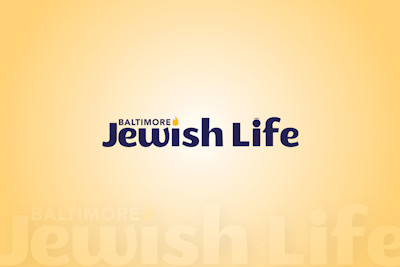While this question may seem a bit bizarre at first glance, it is a disturbingly germane question. More and more, we are seeing a number of Open O’ Rabbis that teach and publish thoughts and ideas that are genuinely antithetical to Torah Judaism. Often this would make them ineligible for a Minyan according to the Chofetz Chaim’s writings. One such clergyman, recently featured in the Forward had once published his opinion that Moshiach is really “all of mankind” and that there will be no Third Temple. Another has denied the Divine Origin of Sinai. Yet another has denied the Sinaitic nature of the Oral law.
Recently, one of the leading Poskim in North America, Rav Shlomo Miller, shlita, from Toronto, expressed his written opinion that Orthodox Jewish media should not be calling members of this movement with the term, “Open Orthodoxy” – because it is confusing. The fact that the Forward has labelled one of these clergyman as “Orthodox” is a case in point.
Indeed, a book written by David Rosenthal is entitled, “Why Open Orthodoxy is not Orthodox” is now available on Amazon. The book contains a forward by the Rosh Yeshiva of the Ner Israel Rabbinical Seminary in Baltimore, Rabbi Aharon Feldman, shlita. He writes:
“Since 1997, Open Orthodoxy, through its institutions, Yeshivat Chovevei Torah and Yeshivat Maharat, has ordained over 100 students, most of whom serve in positions throughout America. It is often viewed as—and claims to be—a branch of Orthodoxy. However, the truth is far from this. Citing countless statements from the leaders and disciples of Open Orthodoxy, this book shows beyond a shadow of a doubt that this movement is not Orthodox and, in fact, seeks to undermine Orthodoxy. “…Open Orthodoxy is a movement which poses as Orthodoxy, with teachers who pose as halachic authorities and students who pose as Orthodox Rabbis.”
And yet it is not true that everyone who labels himself “Open Orthodox” is ineligible to be counted for a Minyan. Each person must be weighed and judged separately. So how can a synagogue determine whether its candidate is ineligible to be counted for a Minyan?
During the gold rush in the United States, it was sometimes difficult to determine whether a shiny looking ingot of metal was, in fact, gold. It was chemically determined that Nitric acid ate away other metals more easily than it did gold. This soon became known as, “the Acid Test.” Later, this term was used to mean, “a sure test which would give an incontestable result.”
Unless the candidate will lie, Halacha does give us an “acid test” whether or not an Open O’ Rabbi is ineligible for being included in a Minyan.
The Chofetz Chaim, in his magnum opus entitled, “Mishna Brurah” provides us with the criteria of who may or may not be included in a minyan. One such category deals with theological issues. In three different sections of his work, the Chofetz Chaim delineates seven theological requirements in order to be included as one of the ten men in a minyan.
The Acid Test for Minyan Inclusion – Based on Mishna Brurah 55:46, 55:47, and 126:2.
1. Does the candidate believe that G-d will resuscitate the dead – in the traditional way of understanding this term?
2. Does the candidate believe in the future redemption – in the arrival of Moshiach – in the traditional sense?
3. Does the candidate believe that the Torah is from Heaven?
4. Does the candidate believe in the oral law – that Moshe Rabbeinu received traditions from Hashem and that these traditions were handed down to us and are found in our Talmud?
5. Does the candidate believe that there is reward and punishment in the afterlife?
—
6. Does the candidate continuously sin out of spite (as opposed to out of desire)?
7. Does the candidate believe in another religion such as Hinduism, Buddhism, Islam, and Christianity or is a brazen and public Sabbath violator, and should know better?
All seven of these would disqualify the would-be clergyman from being included in a Minyan. In response to the question first posed in the headline – yes, a synagogue should not be hiring someone who, according to the Mishna Brurah, is ineligible for a minyan. Unfortunately, there are numerous such individuals who are members of the Open O’ movement.
One such individual is a founding member of the International Rabbinic Fellowship (IRF), Open Orthodoxy’s rabbinic organization. He also served as chairman of the IRF’s conversion committee and currently serves on Yeshivat Maharat’s advisory board. In 2014, he published a 65-page article in their Torah journal. In addition, he edited the IRF’s book which deals with the halachic definition of death. He writes:
“…the Torah seems to have evident signs of being an edited work which makes use of multiple sources and contains layers of redaction…”
Indeed, YCT’s own Rosh Yeshiva takes on the Mitzvah of destroying Amalek and writes,
“What possible message can we learn from this mitzvah?”
Another YCT faculty member of its Jewish Leadership Advisory Board, writes, “It is possible, then, to accept that the Torah in its current form is the product of historical circumstance and a prolonged editorial process..”
All of these statements, if their author stands by such quotes, knocks them out of the Minyan eligibility ballpark. So when dealing with an Open O Rabbinic candidate – caveat dico.
The author can be reached at yairhoffman2@gmail.com














